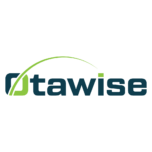Can Small Businesses Benefit from Business Management Software In Nigeria?
In today’s fast-paced business environment, small businesses need more than just passion and hard work they need smart tools to stay competitive. Business management software has become a game-changer for small enterprises looking to streamline operations, boost productivity, and improve team collaboration. That’s where Otawise comes in. As an all-in-one business management software, Otawise is designed specifically to meet the unique needs of small and growing businesses. From managing customer relationships to tracking sales, overseeing projects, and automating daily tasks, Otawise simplifies the complexities of running a business. Many small business owners struggle with juggling multiple tools or handling time-consuming manual processes, but Otawise brings everything under one roof. By providing powerful yet user-friendly solutions, it helps businesses save time, reduce costs, and focus on growth. This blog explores how small businesses can truly benefit from using business management software like Otawise to elevate their operations and achieve long-term success. How Can Business Management Software Help Small Businesses simplify Operations In Nigeria? For small businesses, juggling multiple tasks customer management, invoicing, inventory, and employee coordination can be overwhelming. Business management software like Otawise offers an all-in-one solution that simplifies daily operations by integrating key business functions into a single, user-friendly platform. With Otawise, small business owners can automate repetitive tasks such as billing, customer follow-ups, and inventory updates, significantly reducing manual workload and human error. Otawise also centralizes data, giving teams access to real-time information that improves decision-making and workflow efficiency. For example, instead of switching between spreadsheets and email threads, team members can collaborate within the platform, track progress on tasks, and manage client relationships seamlessly. This not only saves time but also enhances accuracy and accountability. By streamlining these processes, Otawise empowers small businesses to focus on growth, customer satisfaction, and strategic planning rather than getting bogged down in administrative chaos. What Key Features of Business Management Software Are Most Valuable for Small Businesses? For small businesses, the right features in a business management software can make all the difference. Otawise stands out by offering an all-in-one platform tailored to simplify operations, save time, and boost productivity. One of the most valuable features is customer relationship management (CRM), allowing small businesses to track interactions, follow up with leads, and improve customer satisfaction. Another is project and task management, which helps teams stay organized and meet deadlines with clarity. Otawise also offers invoicing and payment tracking, empowering business owners to manage cash flow efficiently. Inventory management and real-time reporting provide insights that support data-driven decisions. These features are not only scalable but also easy to use ideal for small teams without tech-heavy backgrounds. Learn more about Otawise’s features or check out our blog on choosing the best CRM for deeper insights. How Does Business Management Software Support Small Business Growth? Business management software like Otawise plays a vital role in driving small business growth by labour-saving operations, improving productivity, and enabling data-driven decision-making. With Otawise, small businesses can automate repetitive tasks such as invoicing, inventory tracking, and customer follow-ups freeing up valuable time to focus on strategy and expansion. One of the key growth benefits of Otawise is its robust analytics dashboard, which provides real-time insights into sales, customer behavior, and operational efficiency. This helps business owners make smarter, faster decisions that align with their goals. Additionally, Otawise’s scalability means that as your business grows, the platform adapts to accommodate new team members, clients, and processes seamlessly. Its integration capabilities with tools like payment processors and email marketing platforms see integrations ensure that you’re building an ecosystem that grows with you. Learn more about how Otawise helps businesses scale. Can Business Management Software Improve Collaboration for Small Teams? Absolutely. For small businesses, collaboration isn’t just a buzzword—it’s a core ingredient for productivity, innovation, and sustainable growth. Business management software like Otawise is built with collaboration in mind, offering features that simplify team communication, enhance transparency, and streamline workflows across departments. With Otawise, small teams can stay connected whether they’re in the office or working remotely. The platform offers real-time task management and shared dashboards that allow team members to see what everyone is working on. This helps eliminate duplicate efforts, minimize confusion, and improve accountability. For instance, project deadlines, task updates, and important notes can all be centralized in one place, making it easier for everyone to stay aligned. Otawise also integrates team messaging and file sharing, allowing employees to collaborate on documents, provide instant feedback, and resolve issues quickly—without jumping between multiple platforms. This unified communication flow reduces time spent on emails or third-party apps, helping your team focus on what really matters. From a management perspective, Otawise makes it easier to assign roles, monitor performance, and provide support, which fosters a culture of transparency and shared responsibility. Small teams benefit from the visibility into each other’s workloads, making it easier to step in when help is needed. Moreover, Otawise supports cloud-based access, so teams can collaborate from anywhere. Whether you’re working from your office in Lagos or coordinating with a freelance designer in another state, Otawise keeps your team in sync. In a world where every second counts, tools that enhance collaboration give small teams a competitive edge. With Otawise, that edge becomes your advantage. What Cost-Saving Opportunities Can Small Businesses Gain from Using Business Management Software In Nigeria? Running a small business often means operating on a tight budget. Every naira spent must be justified—and that’s where business management software like Otawise becomes a game-changer. It helps small businesses cut unnecessary expenses, optimize resources, and achieve more with less. 1. Reduce Operational Costs One of the biggest cost-saving advantages of using Otawise is the reduction in day-to-day operational expenses. By consolidating multiple business functions—like customer relationship management (CRM), inventory tracking, invoicing, and team communication—into a single platform, you eliminate the need for multiple standalone tools. This means you spend less on software subscriptions while also reducing overheads linked to manual processes. For example, instead of paying separately for a CRM tool, project manager, and invoicing










